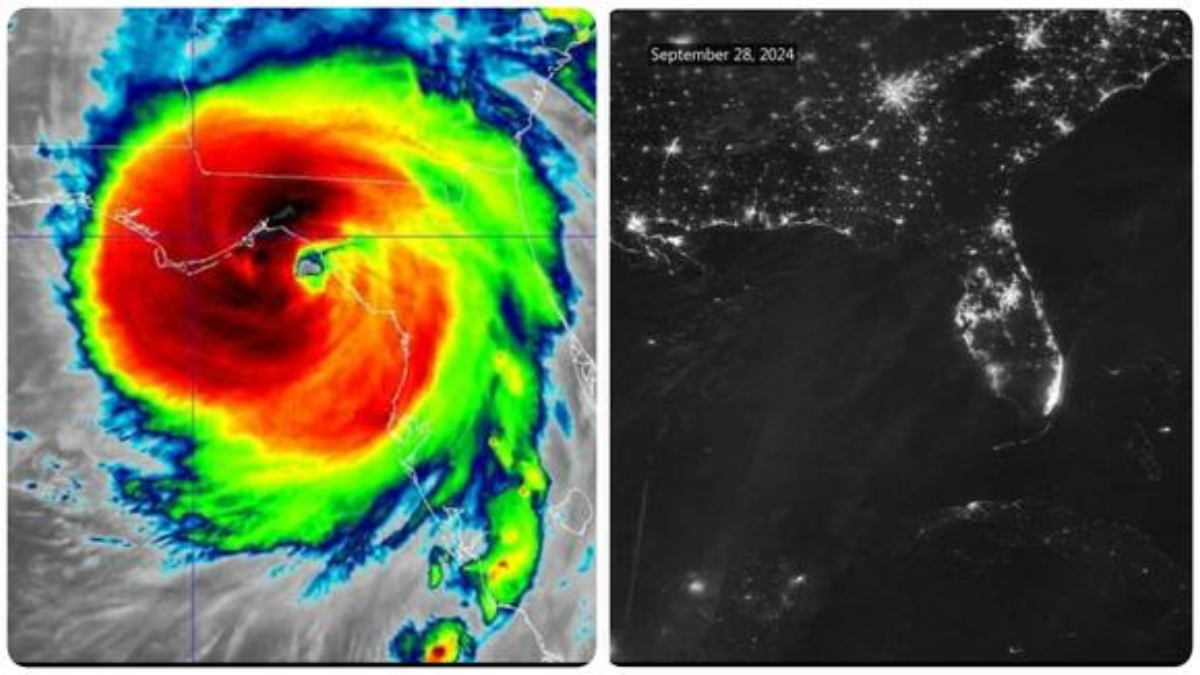The National Weather Service (NWS) has released its final report on Hurricane Helene, detailing the extensive damage it caused across Georgia. The powerful storm, which made landfall along the southeastern coast, brought widespread flooding, structural destruction, and prolonged power outages.
The report provides a comprehensive analysis of the hurricane’s path, wind speeds, rainfall totals, and the overall impact on communities across the state.
Hurricane Helene’s Path and Strength
According to the NWS report, Hurricane Helene intensified into a Category 4 storm before slightly weakening upon making landfall. The storm’s sustained winds exceeded 130 mph, causing catastrophic conditions in both coastal and inland areas. As Helene moved inland, heavy rain and storm surges led to significant flooding, particularly in low-lying regions.
Meteorologists noted that Helene’s slow-moving nature prolonged exposure to severe weather, contributing to heightened destruction. Over a 48-hour period, some areas in Georgia recorded more than 15 inches of rainfall, leading to severe river flooding, landslides, and widespread erosion. Numerous neighborhoods found themselves submerged, with water levels reaching record highs in some parts of the state.
Widespread Power Outages and Infrastructure Damage
One of the most significant impacts of Hurricane Helene was the widespread power outages that affected millions of residents. The powerful winds and torrential rain knocked down thousands of trees and power lines, plunging entire communities into darkness. Many residents were left without electricity for more than a week as utility companies struggled to repair damaged infrastructure.
The hurricane also severely damaged critical infrastructure. Roads were washed away, bridges collapsed, and water treatment facilities sustained substantial damage. In some regions, emergency crews had difficulty reaching affected areas due to the impassable road conditions. The NWS report highlights the urgent need for Georgia to improve storm preparedness and infrastructure resilience to better withstand future hurricanes.
Evacuations and Emergency Response
Ahead of Hurricane Helene’s landfall, Georgia officials ordered mandatory evacuations for coastal and flood-prone regions. These evacuation efforts played a crucial role in preventing mass casualties, though some residents chose to stay behind and endure the storm.
Emergency responders worked tirelessly to rescue stranded individuals, provide medical assistance, and transport displaced residents to shelters.
State and federal agencies coordinated closely to manage emergency response efforts. Shelters provided food, water, and medical aid to evacuees, while relief organizations stepped in to assist communities with basic necessities. Despite these efforts, the scale of the disaster overwhelmed response teams, underscoring the need for improved disaster preparedness measures.
Economic Losses and Long-Term Recovery
The economic toll of Hurricane Helene is estimated to be in the billions. Thousands of homes, businesses, and farms suffered extensive damage. In southern Georgia’s agricultural regions, farmers experienced catastrophic crop losses due to flooding, jeopardizing the local economy.
Insurance claims continue to pour in, and federal disaster relief funding has been allocated to assist in rebuilding efforts.
Beyond the immediate financial losses, long-term recovery presents an enormous challenge. Many affected communities will require months, if not years, to fully rebuild. The NWS report stresses the importance of strengthening building codes, improving drainage systems, and investing in modern weather monitoring technologies to minimize future hurricane-related damage.
The Psychological and Social Impact
In addition to the economic destruction, Hurricane Helene left an emotional and psychological toll on Georgia residents. Many families were forced to flee their homes, and the uncertainty of returning to find their belongings destroyed has left lasting trauma. Local mental health organizations have stepped up to provide counseling and support services for those affected.
Community outreach programs have also played a critical role in recovery efforts. Volunteers from across the country have come together to assist in rebuilding homes and businesses, providing a sense of hope amid the devastation. Still, residents face a long road to recovery, with many relying on government assistance and charitable organizations to get back on their feet.
Looking Ahead: Future Storm Preparedness
Hurricane Helene’s impact serves as a sobering reminder of Georgia’s vulnerability to powerful storms. Climate experts warn that hurricanes are becoming more frequent and intense due to climate change, making it imperative for the state to enhance its disaster resilience.
The NWS report underscores the need for proactive measures to mitigate hurricane damage in the future. Recommended actions include expanding early warning systems, investing in stronger infrastructure, and increasing public awareness campaigns on hurricane preparedness.
State officials are also considering policy changes to improve emergency response coordination and reduce the risk of catastrophic damage in the future.
Conclusion
Hurricane Helene has left a lasting mark on Georgia, both in terms of physical destruction and human suffering. While recovery efforts are underway, the storm’s impact has sparked conversations about the importance of improving resilience to extreme weather events.
As the state rebuilds, officials and residents alike are working together to ensure that Georgia is better prepared for future hurricanes.
For the full report and additional resources on hurricane preparedness, visit the National Weather Service.
Disclaimer – Our team has carefully fact-checked this article to make sure it’s accurate and free from any misinformation. We’re dedicated to keeping our content honest and reliable for our readers.
